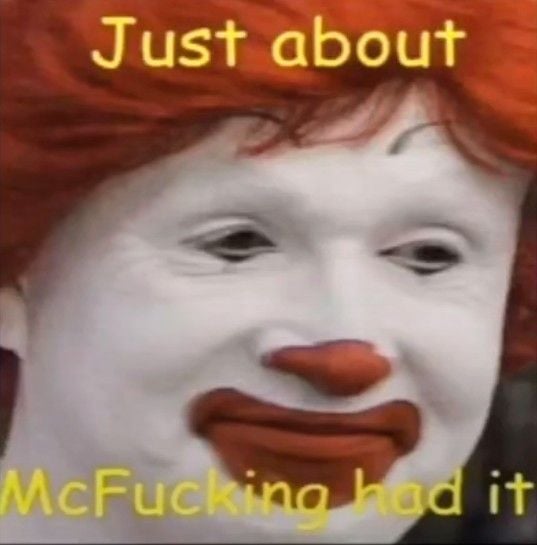EDIT: for some context on the problems this creates
The science is clear that fast-growing chickens like the Ross 308 are doomed by their genetics. These have been engineered to grow so incredibly fast, and their bodies just cannot handle it.”
Jackson said secret filming at broiler farms supplying big supermarkets has shown birds struggling to walk or collapsing under their own weight, or dying from heart failure, and dead birds were filmed lying among the flocks.
[…]
Andrew Knight, a professor of animal welfare and ethics at the University of Winchester, said: “With these really rapid growth rates, it can be difficult for the heart and circulatory system to keep up with the expanding body mass. A proportion of these animals suffer from heart failure. It’s also difficult for the bones, ligaments and tendons to keep up with the rapidly increasing body mass, meaning that a proportion of these birds become severely lame [inability to walk properly].”
And that quote only lists just some of the health problems they face. There’s a ton of other problems too
This is horrible.
So not only do we breed them to kill them, we breed them so they suffer for their entire life.
We need to find other ways to feed people,or try to stop people eating too much (the few vs the poor, of course)
fun fact there is already a perfect alternative
Spoiler
vegetables
You said the V word. Now I’m gonna eat two whole chickens out of spite /s.
deleted by creator
You really think “part of nature” is a good argument for if something is morally acceptable? You can’t think of anything that happens in the natural world that we choose not to do as civilized moral agents because it’d be wrong to do?
Also pugs, or Scottish fold cats… and those are creatures we love and keep as pets, not even livestock, and we still do it
They already have lab grown chicken meat available in restaurants in Singapore
I remember going to my aunt’s home where they had a chicken coup. I asked why the chickens where so skinny, thinking the poor chickens weren’t being fed enough. My dad said this is a normal chicken not those super fat chickens made for their meat. So I looked into it and saw how chickens were treated and problems with their sizes. Truly eye opening.
They should stage a coop.
Chicken Little? More like Chicken Big
“Sir, they’ve given us a list of their demands, but I can’t read this … this chicken-scratch.”
When I was in Korea, I leaned that chickens can (sort of) fly. They can flap their wings hard enough to get from the ground to a tree branch maybe 8 feet or so off the ground, and safely back down.
And I’ve heard chickens tasted better back in the old days. A bird that eats grubs, worms, grasshoppers, frogs, snakes, etc tastes different than one that just eats chickenfeed all day.
Wild turkeys can fly, too. It’s impressive. I once came around a blind corner on my bike, there was a turkey in the road, and it took off in a manner I can only describe as 747esque — it did not look like it should be able to fly, yet there it was, clearly flying.
As someone who has had one come through a windshield can confirm
Oh, the humanity!
“As God is my witness…”
My chickens can get pretty high. Only one can get a full 8ft off the ground, but they can fly pretty well for being non-flight birds. They can fly pretty far across the ground too, when they want to.
Cocks are getting bigger
Any moment now, little buddy. It’s our turn soon
The next logical step would be to genetically engineer out the parts that make it an animal: the digestive tract and most of the brain and nervous system, ending up with spherical meat-fruit that grow on a chicken tree plumbed into a nutrient feed.
That’d be something akin to lab-grown meat, and imho actually a vast improvement.
Eventually, they’ll be able to grow them as large as a T-Rex again…
Imagine how delicious that would be
Mmmm… fried T-Rex drumstick
Interesting that the crest also grew much quicker on the obese chicken.
It’s not just feeding them more that’s caused this. To get chickens this large they genetically selected/modified for what was more profitable. I.e they may lead to features being changed unevenly
This is all at expense of pretty everything else like their health
Are these the same breed of chicken? For example, Cornish Cross or American Breast or something? If not, it does feel kinda weird comparing them. If they are all the same base breed, that’s some totally crazy selection going on there.
For clarity/example, comparing a Cornish Cross from 1970 against one from 2000 is different than comparing a Cornish Cross from 1970 against an American Breast in 2000. I just wanted to clarify what was being compared.
They have been artificially selected to grow faster. The breeds of chickens are not natural in the slightest. They are even patented so only one company can for instance sell the Ross 308. The changes in breeds that are most common are due to intensive selection. The breeds themselves will get classified differently as those selections happen, so comparing the same one wouldn’t make as much sense
That’s crazy. I don’t raise chickens right now, but I do follow a lot of farm/homestead content with people who do raise poultry for meat. I had considered raising my own egg-layers (just a couple) since I have plenty of space for them to run around and delicious bugs to eat. I have no idea what breeds we have here in Japan, though, for any use case.
The places one get chickens from are likely going to be the same or similar to the common commercial breeds.
It’s also worth noting that domesticated breeds of egg-laying chickens haven’t been spared either :( They have been selected to lay so many eggs that it harms their bone health. It takes a lot of calcium to make eggs, so naturally they don’t lay them as much. In the wild, they would also often eat their own unfertilized eggs to recover the calcium too. I’ve read that a fair number of animal sanctuaries actually give them medications to lower their rate of egg laying and let them eat their own eggs to recover that calcium
Hens will often lay around 300 eggs per year. That’s very different from the wild ancestor of modern chickens – the red junglefowl – which lays around a dozen per year. And much higher than in 1900, when commercial hens would lay around 80 eggs yearly
Ideal egg breed hen would be akin to a termite queen, it seems
If we keep going maybe we can get back to dinosaurs!
I’ve been listening to a really good show on this recently. It’s not as clear cut as I once thought. Yes, welfare wise these chickens are worse, but environmentally, they are much better. They eat less, poo less and the poo is contained (living indoors) so it can be burnt to create heat for the sheds in Winter, and then reused as fertiliser. When left to roam free, they poo on the fields, which then runs off and destroys river habitats (see the River Wye).
Worth a listen for those in the UK:
https://www.bbc.co.uk/sounds/play/m001stxt?partner=uk.co.bbc&origin=share-mobile
My parents used to keep chickens in their garden. They could roam in the garden freely during the day, the coop was only closed at night to keep predators out. One day a chicken decided it would like to check out the roof of the house across the street. Now my parents’ house is at a hillside so the neighbor’s house was quite a bit lower but the chicken still had fly at least 3m up and probably almost 10m across the street. It sat there for quite a while and we were a bit worried it wouldn’t dare to fly back down but eventually it did. Chickens are funny.
We have genetically engineered MEGA CHICKEN
Some have used the term “Frankenchicken” to refer to them because of their numerous health and pain problems from their fast growth
Dat chicken got back!
McNugget maximization.
I had nothing to do with it. I just report the news.
At their expense
What is the downside for the chicken?
For customers i wouldn’t be surprised that the meat is less flavorful and less enjoyable (like less tender).
Quite a lot,
The science is clear that fast-growing chickens like the Ross 308 are doomed by their genetics. These have been engineered to grow so incredibly fast, and their bodies just cannot handle it.”
Jackson said secret filming at broiler farms supplying big supermarkets has shown birds struggling to walk or collapsing under their own weight, or dying from heart failure, and dead birds were filmed lying among the flocks.
[…]
Andrew Knight, a professor of animal welfare and ethics at the University of Winchester, said: “With these really rapid growth rates, it can be difficult for the heart and circulatory system to keep up with the expanding body mass. A proportion of these animals suffer from heart failure. It’s also difficult for the bones, ligaments and tendons to keep up with the rapidly increasing body mass, meaning that a proportion of these birds become severely lame [inability to walk properly].”
They are more likely to have all kinds of other health issues not listed in the quote above such as hock burns
has shown birds struggling to walk or collapsing under their own weight
Oh yeah, I heard about that. 😞
Thanks!
While I can’t attest to the veracity of this website, and my objection to the practice of raising chickens for meat has more to do with treatment than anything else, this website gives common reasons why the modern broiler chicken is an unhealthy breed
Gotcha. Thanks!
I hope the situation will improve with more regulations or pressure. Or maybe if we try to only buy better breeds.
A good place to start is by changing consumption levels as not doing doing so would make things much harder. It’d be difficult to maintain current consumption levels with slow-growing birds as it’d require a much larger number of chickens to be slaughtered
Maintaining this level of consumption entirely with a slower-growing breed would require a 44.6%–86.8% larger population of chickens and a 19.2%–27.2% higher annual slaughter rate, relative to the current demographics of primarily ‘Ross 308’ chickens that are slaughtered at a rate of 9.25 billion per year.
[…]
In sum, without a drastic reduction in consumption, switching to alternative breeds will lead to a substantial increase in the number of individuals killed each year, an untenable increase in land use, and a possible decrease in aggregate chicken welfare at the country-level scale
https://royalsocietypublishing.org/doi/full/10.1098/rsos.210478#d1e265
It might also be easier for people like me to try to eat less meat than going full vegan. 1 meat-less meal per week to start doesn’t sound too bad.
People have also gotten bigger, but for different reasons










